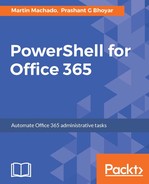In the early days, SharePoint was positioned as a great replacement for file shares. SharePoint addressed some important weaknesses of file shares: versioning, the recycle bin, check in/check out, history/auditing, the web interface, and custom metadata features, to name a few.
Fast forward to the present, SharePoint and other content management system products have effectively replaced file shares in the collaboration space. Yet, file shares still remain very relevant to personal storage, although you would hardly qualify OneDrive for Business as only a file share (at least not one from 10 years ago). Officially defined as file-hosting products, OneDrive and OneDrive for Business still offer the convenience of operating system integration of file shares while adopting important features from the CMS world.
Why start with SharePoint in the chapter on OneDrive, you ask? I am glad you did. At the time of writing, there are a few differences between OneDrive and SharePoint. All the OneDrive administration commands are included within the SPO API. OneDrive's web interface is a trimmed down SharePoint site, and you can use the same SharePoint CSOM/REST APIs to work with OneDrive.
From an administrator's perspective, OneDrive can be thought of as a synchronization client (in charge of keeping data consistent between local copies and online storage) and a web interface (a branded and customized SharePoint site).
Will this be the case in the long run? At the moment, we are going through a transition period. From the writer's point of view, SharePoint will continue to provide infrastructure for OneDrive and other services. However, Microsoft is making an ongoing effort to provide one API for all its online services. Also, as the platform matures, the lines between OneDrive, SharePoint, Exchange and other services seem to blur more and more. In the long run, it is quite possible that these products will merge or change in ways we have not thought of. With the maturity of the Microsoft Graph API (the promised API to access all your services), the internal implementation of the services will be less important for developers and administrators.
In this chapter, we will cover OneDrive administration, which can be divided into three different areas:
- Feature configuration
- Personal site management
- Data migration
